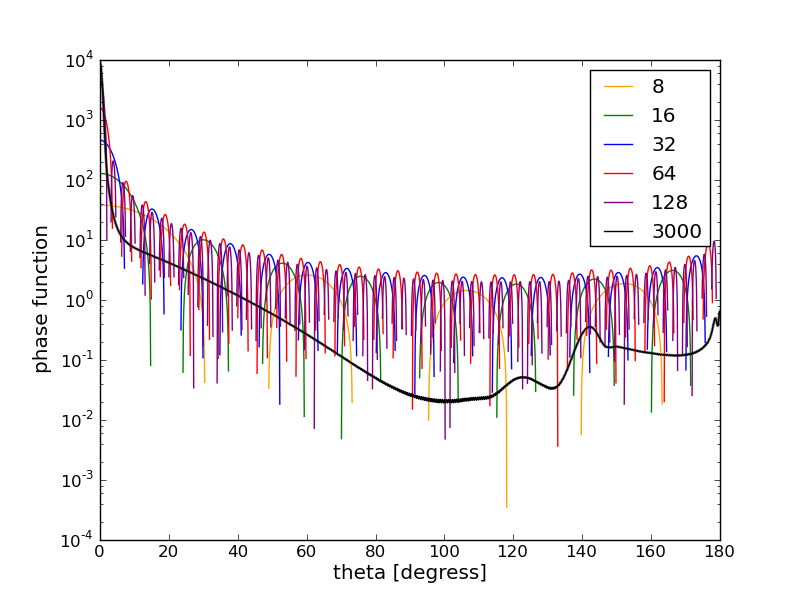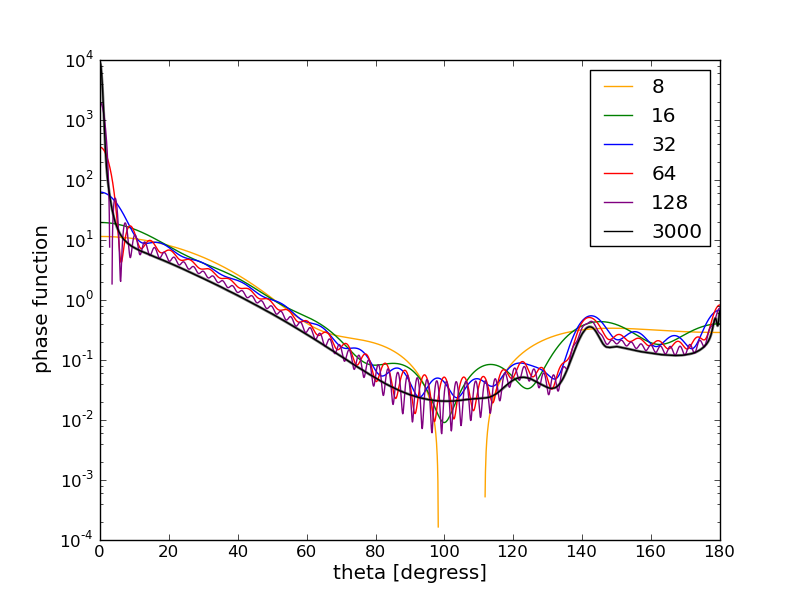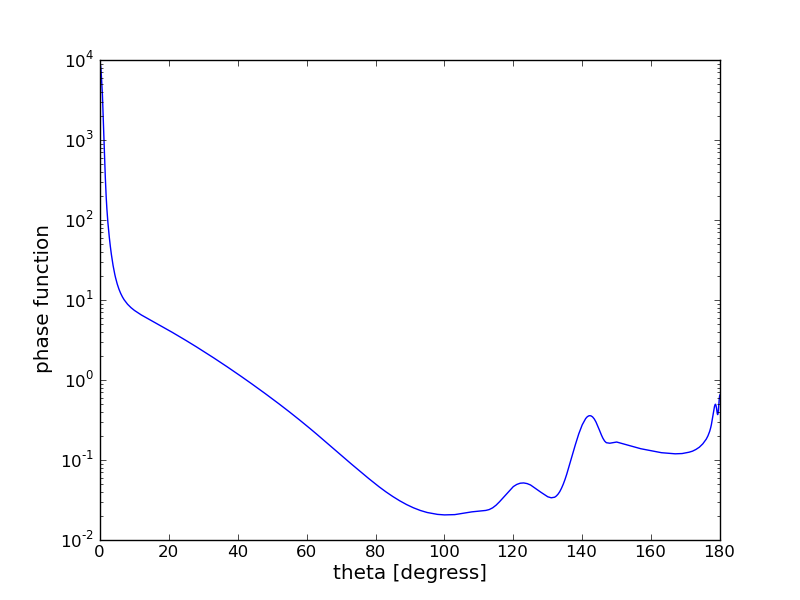Sidebar
Table of Contents
Legendre decomposition of phase function and delta scaling
Task: The file phase_function_500nm_reff10.dat includes a typical scattering phase function for cloud water droplets. It has been computed using Mie theory (mie tool in libRadtran). In order to apply the discrete ordinate method the phase function is expanded in a Legendre series. The number of terms in the Legendre series is equal to the number of streams (nstr). Investigate how many Legendre terms are required to represent the phase function as a Legendre series.
The so-called delta scaling method (see wiscombe77b.pdf) is used to represent the phase function with less number of Legendre terms by writing it as a sum of a delta function (representing the forward scattering peak) and a Legendre series for a phase function with cutted forward scattering peak. Explain the delta scaling method and check how much improvement can be achieved using this method.
LibRadtran includes 2 tools which can be used for this task:
pmom - calculates Legendre polynomials for given phase function
phase - calculates phase function for given Legendre polynomials (with or without delta scaling)
Both tools are in the libRadtran/bin directory and help is obtained using the option -h.
Solution
The following shell script calculates Legendre polynomials and the phase functions corresponding to different number of terms in the Legendre series:
- gen_legendre.sh
# Expand phase function in Legendre polynomials for i in 4 8 16 32 64 128 3000; do pmom -l $i -n phase_function_500nm_reff10.dat > nmom$i.dat; done # Calulate phase function from Legendre polynomials for i in 4 8 16 32 64 128 3000; do phase -c -d -s 0.1 nmom$i.dat > phase$i.dat; done # Calulate phase function from Legendre polynomials with delta scaling for i in 4 8 16 32 64 128 3000; do phase -c -d -s 0.1 -f nmom$i.dat > phase$i\_ds.dat; done
The shell script is executed as follows:
sh gen_legendre.sh
The result is plotted using the following python scipt
- plot_legendre.py
from pylab import * colors=['orange', 'g', 'b', 'r', 'purple', 'k'] phase_orig=loadtxt('phase_function_500nm_reff10.dat') figure(1) semilogy(phase_orig[:,0], phase_orig[:,1], 'grey', lw=2) figure(2) semilogy(phase_orig[:,0], phase_orig[:,1], 'grey', lw=2) i=0 for nmom in ['8', '16', '32', '64', '128', '3000']: figure(1) phase=loadtxt('phase'+nmom+'.dat') semilogy(phase[:,0], phase[:,1], colors[i], label=nmom) xlabel('theta [degress]') ylabel('phase function') figure(2) phase=loadtxt('phase'+nmom+'_ds.dat') semilogy(phase[:,0], phase[:,1], colors[i], label=nmom) xlabel('theta [degress]') ylabel('phase function') i+=1 figure(1) legend() savefig('phase_without_ds.png') figure(2) legend() savefig('phase_with_ds.png')
Result without delta scaling

Result with delta scaling

DISORT2 includes an intensity correction method (which uses the correct phase functions for two orders of scattering). This gives then very accurate radiance results.


